Olivia Allen speaks with Polly Morgan about her captivating taxidermy creations whilst a different type of (nail) artistry occurs at Morgan’s fingertips.
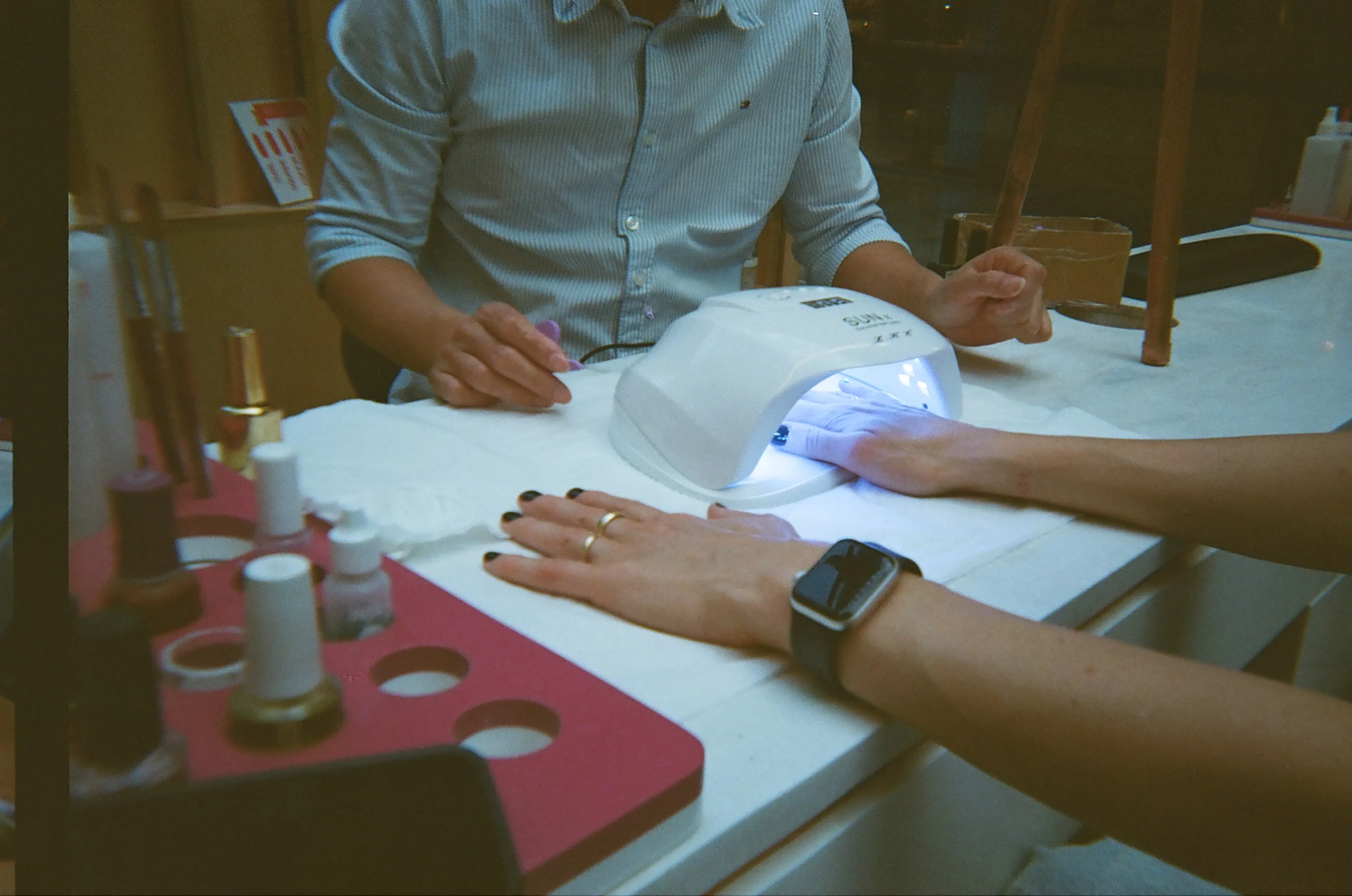
Where better to interview an artist than the nail salon?
Chopping, sawing, and varnishing snake skin might not make for an immaculate manicure, but for artist Polly Morgan, it’s all part of the process. Known for her captivating taxidermy creations, Polly blurs the natural world with artifice with a deft swoop of the sander. Taking a break from manipulating iridescent scales to give her own talons a bit of TLC, she finds herself grappling with something much scarier than a deadly snake: a disapproving nail technician. Aside from trying to offer a succinct explanation that her career in taxidermy is to blame for her short, slightly chipped nails, there’s always the impossible issue of picking a color. There’s nothing that will leave you questioning your decision-making abilities like the withering and unimpressed glances exchanged between staff members. After much back and forth and “we can’t do that”s, Polly settles on an iridescent shade—“Let’s go with that beetle-y one at the end; it’s not like anything I’d normally have.”
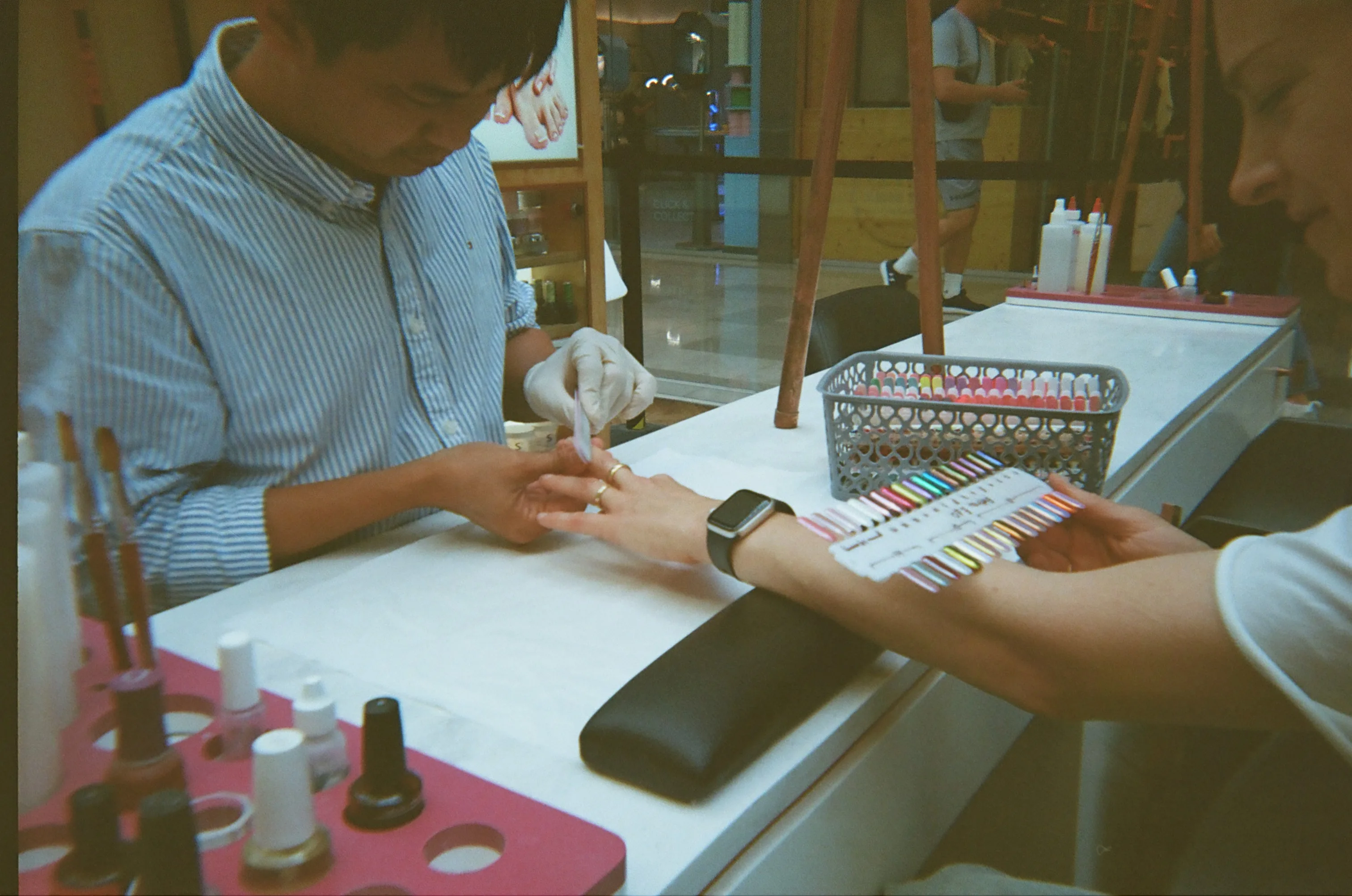
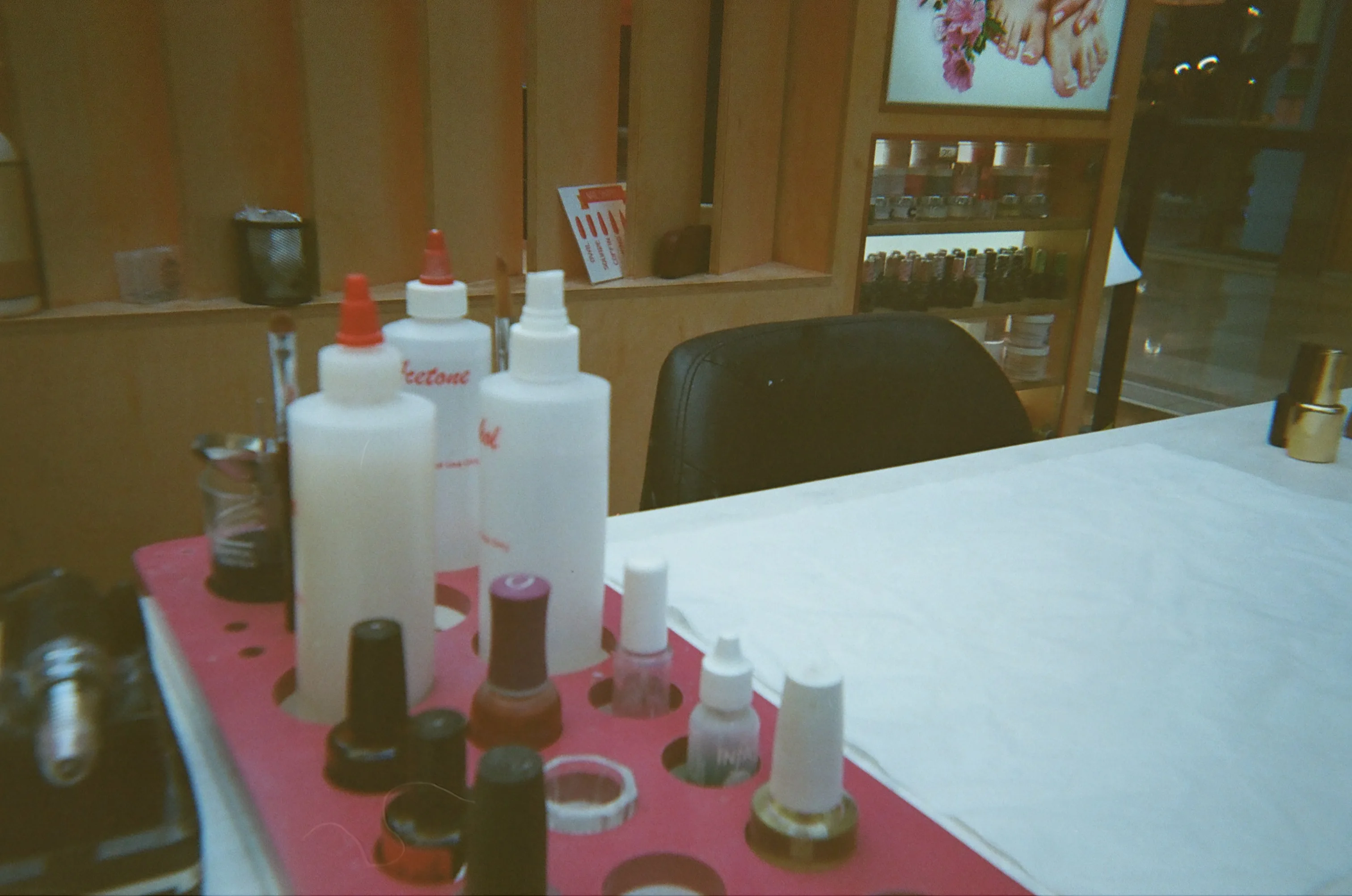
As the painting and polishing of the shellac process interrupts our conversation, it becomes clear that this nail bar offers more than mere cosmetic upkeep for Polly. Here, themes from her work—artifice, mimicry, and transformation—intermingle with the scene of Aunty Ann’s pretzels in the air, blending the world of manicures with the layered deceptions of nature. “Taxidermy itself is all about veneers,” she muses. “It’s about surface versus reality—skin is removed and replaced, just like animals evolve to camouflage or mimic more dangerous species.” Whether warding off the advances of a hungry predator seeking a bite to eat or trying—sometimes not so subtly—to convince the world of who we truly are, we are all, man and beast alike, caught up in a game of appearances, whether it plays out on an Instagram feed or in dark, damp burrows.
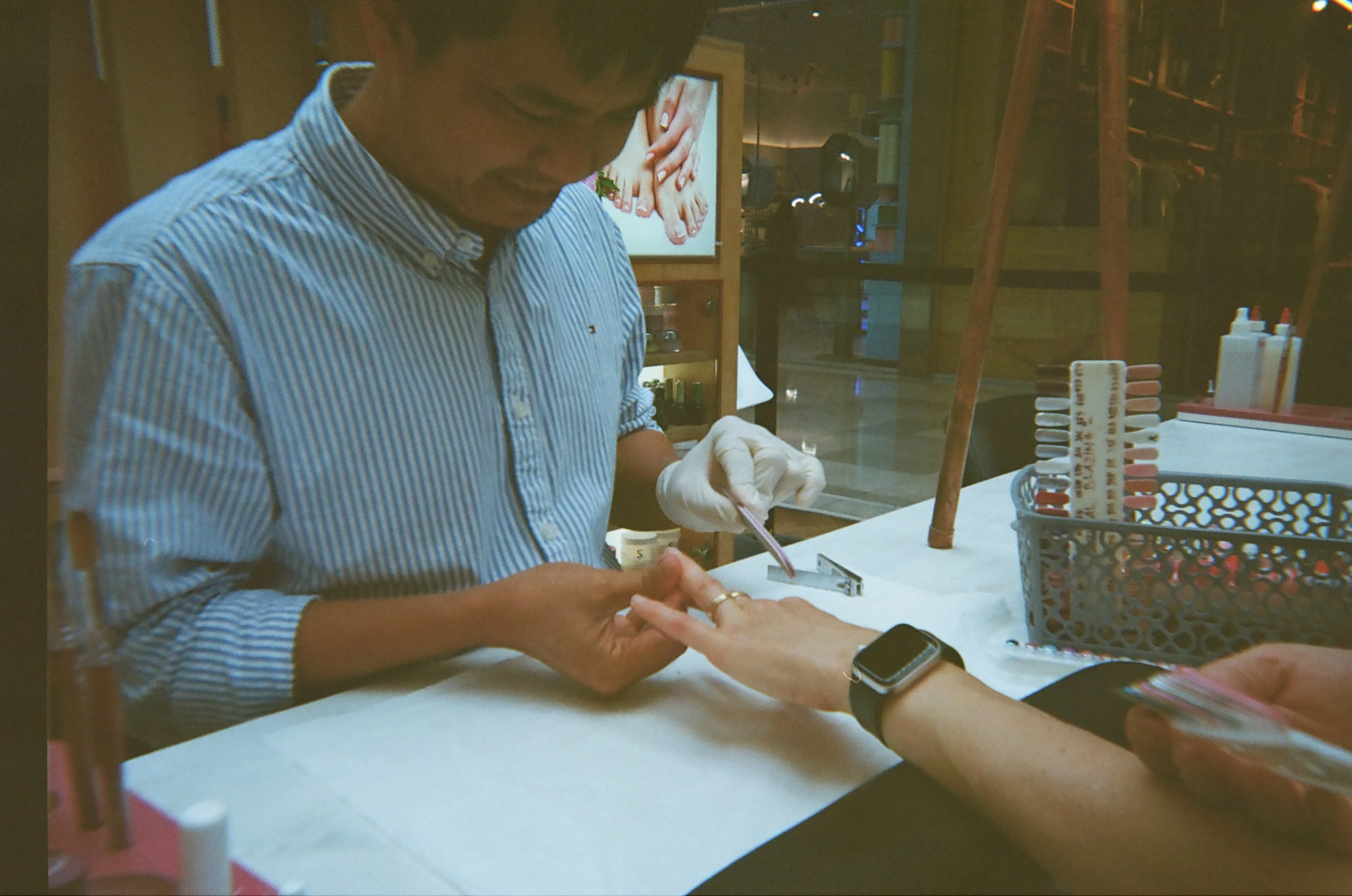
For Polly, diving into nail artistry became a creative revelation rather than just a personal quest for a sparkly new look. In her quest to replicate the iridescent shine of the Sunbeam snake, she found herself wandering into nail bars, soaking up tips from technicians and scouring YouTube for tutorials. “I went to this nail bar in Camberwell, and they showed me these magical powders. That was my eureka moment. But the real revelation came when I discovered iridescent nail transfers. Suddenly, it hit me: you have to treat each scale in the cast like a nail—it has to be as smooth as possible.” This obsessive attention to detail resonates throughout her work, where every scale in her snake casts must catch the light just right, akin to a well-polished nail, bloody cuticles buffed and polished into submission. The meticulous layering of materials—sanding, varnishing, airbrushing—feeds directly into her sculptures. Like the creatures she studies, her techniques have evolved through a process of trial and error. “I’ve learned that sometimes removing things, like sanding down the paint, is more effective than adding more. Happy accidents happen when you’re trying to mimic nature.”
Polly’s precision comes through in her broader body of work, particularly in her polystyrene and snake cast pieces. Reflecting on her sculptures in Un Oeuf Is Un Oeuf, recently showcased during Frieze at TJ Boulting, she explores themes of containment and escape. As the snake escapes from the egg, it breaks free from its polystyrene constraints, slithering between the natural and artificial worlds. The egg acts as a metaphor for the artifice we construct around ourselves—our technology, our lives, and even nature itself.
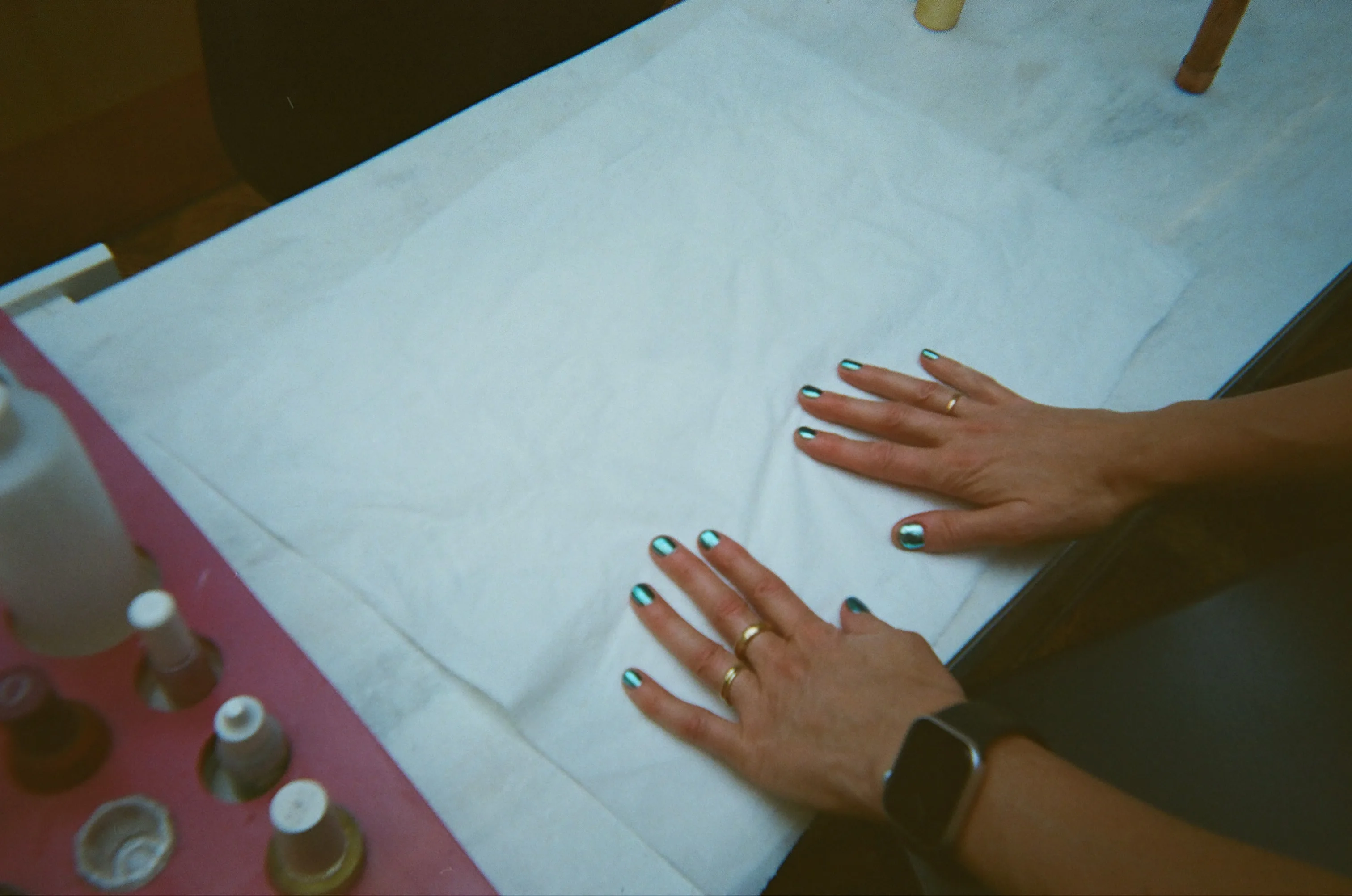
Looking ahead, Polly’s work continues to evolve. She’s diving into a new project with Matt Carey-Williams for a solo show in March. “The pieces are labor-intensive, and I do everything myself,” she admits. While she wouldn’t mind delegating some tasks, she enjoys the hands-on process too much to let go entirely. “I’ve spent years developing new techniques. Each new layer of paint, varnish, or lacquer is like a revelation, much like the snakes’ scales—glossy on top, matte beneath.” This ongoing evolution reflects not only Polly’s artistic journey but also her approach to her materials and the varnished and polished take on the natural world she is portraying.
Despite her fascination with mimicry, Polly’s love for nature shines through; her recent relocation to an idyllic-sounding cottage and studio in the Cotswolds is the stuff of Escape to the Country dreams. For her, taxidermy is a way of preserving its strange beauty. “The uncanny nature of nature fascinates me. There’s always something just a little off, something that makes you question what’s real and what’s constructed. I’m always trying to capture that.” As the manicure comes to its shimmering conclusion and we’re met with an affronting “What do you think?!”, I can see why Polly prefers to work with animals. Frozen snakes are far less likely to make you feel so inferior about your aesthetic inclinations.
Written by Olivia Allen





